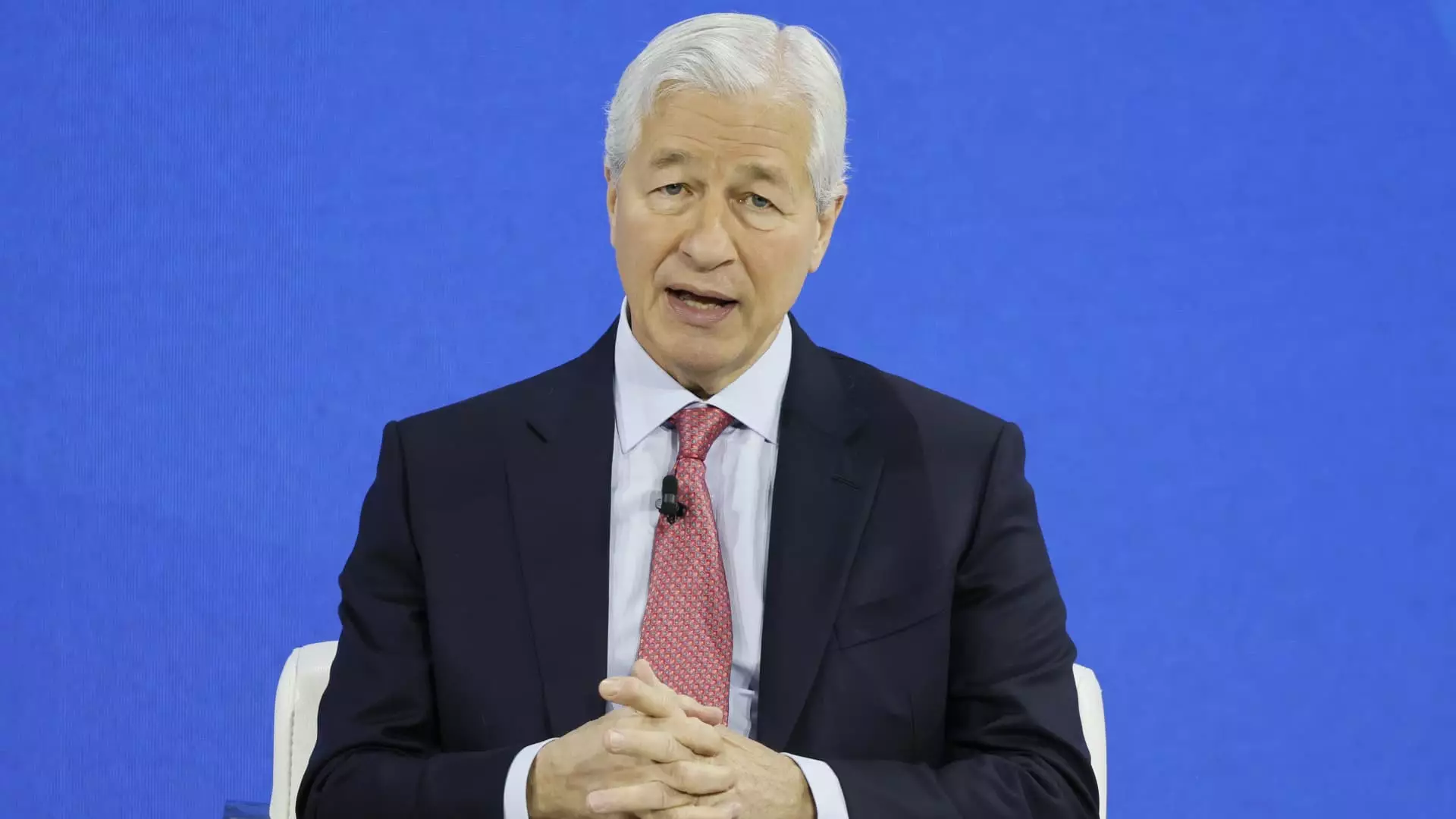JPMorgan Chase, one of the largest financial institutions in the United States, has reported its third-quarter earnings, showcasing results that not only surpassed analyst estimates but also reflect key trends in the banking sector. The figures reveal a mixture of strength and underlying challenges as the bank navigates an evolving economic landscape.
For the third quarter, JPMorgan posted earnings of **$4.37 per share**, significantly higher than the **$4.01** per-share estimate provided by LSEG analysts. The bank’s revenue came in at **$43.32 billion**, outpacing the anticipated **$41.63 billion**. This marked a **2% decline in profit** year-over-year, totaling **$12.9 billion**, while revenue increased by **6%**. Such performance can be attributed primarily to a robust increase in net interest income, which rose **3%** to **$23.5 billion**, comfortably exceeding the **$22.73 billion** that analysts had forecasted.
The impressive interest income was fueled by strong loan growth in its credit card division and gains from securities investments. This provides a glimpse into JPMorgan’s ability to leverage its diverse asset portfolio effectively, particularly in a period characterized by fluctuating interest rates.
CEO **Jamie Dimon** addressed the quarterly results with optimism but did not shy away from discussing the regulatory environment that banks face today. He expressed concerns regarding the government’s push for financial institutions to hold more capital reserves. Dimon highlighted the need for regulations that shall promote a stable financial system without hampering economic growth. His remarks suggest a proactive approach, calling for a reassessment of existing regulations that were introduced for valid reasons but may now need adjustment to foster a healthier economic climate.
Dimon’s insights emphasize a broader industry narrative: banking leaders are seeking a balanced approach to regulations that support both stability and growth. His commitment to reevaluating the impact of regulatory frameworks reflects the intricacies of operating within a heavily scrutinized sector.
Another noteworthy aspect of JPMorgan’s performance this quarter was the considerable increase in its investment banking fees, which surged **31%** to **$2.27 billion**, outperforming the expected **$2.02 billion**. This uptick indicates the bank’s strong positioning in the capital markets during a time when many firms faced downturns. The fixed income and equities trading businesses also contributed positively, generating revenues of **$4.5 billion** and **$2.6 billion**, respectively. These results underscore the bank’s ability to navigate changing market conditions effectively.
Despite the successes, CFO **Jeremy Barnum** pointed out that the recent provision for credit losses of **$3.1 billion** exceeded estimates. This indicates a proactive risk management approach, particularly in light of increasing charge-offs and the necessity to build reserves amid the growing credit card loan portfolio.
While JPMorgan Chase has historically thrived in a rising interest rate environment, current trends present a new challenge as the Federal Reserve begins to cut rates. There are concerns over compressed profit margins as yields from loans may decline more rapidly than the costs associated with funding. Such dynamics will be critical for the bank to manage as it adapts its strategies in a potentially lower-rate environment.
Barnum’s comments suggest a cautious outlook on net interest income moving forward, indicating a temporary spike in earnings should not be misinterpreted as a long-term trend. This illustrates the importance of strategic foresight in maintaining financial performance amid changing economic conditions.
Overall, JPMorgan Chase’s third-quarter report reflects a business that is performing well, yet also poised on the precipice of significant economic changes. The impressive earnings and strategic insights from leadership underscore a commitment to navigating complexities with a balanced approach. As the bank prepares for potential fluctuations in interest rates and evolving regulations, its ability to anticipate and react to market trends will be crucial for sustaining growth in the face of uncertainty.


Leave a Reply